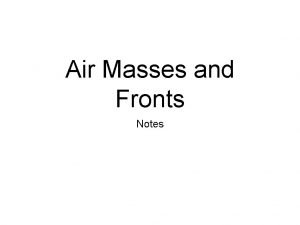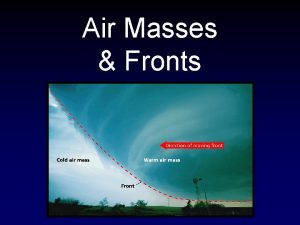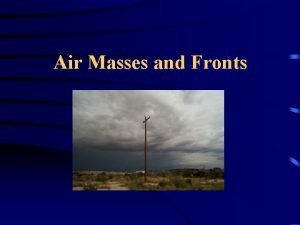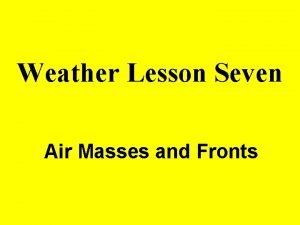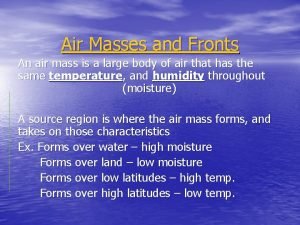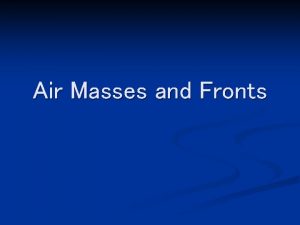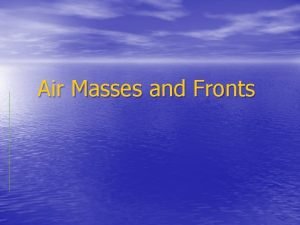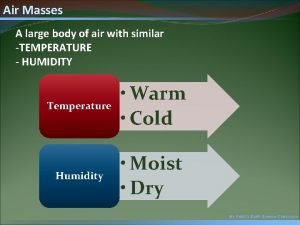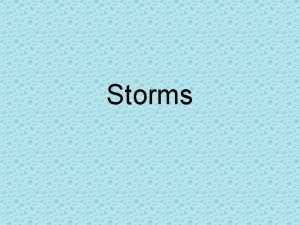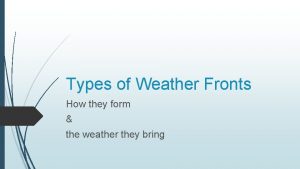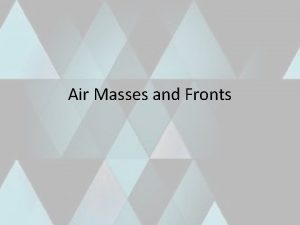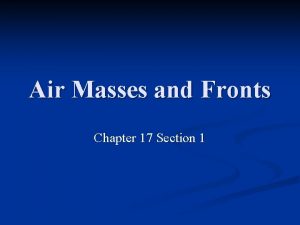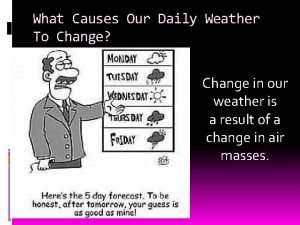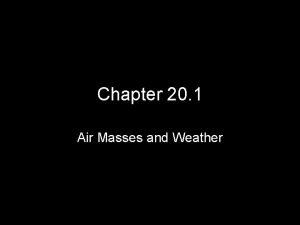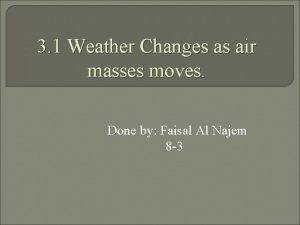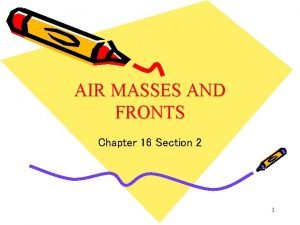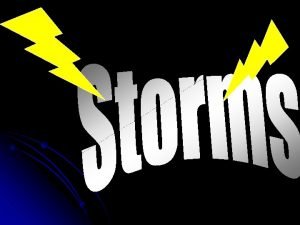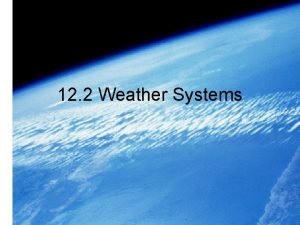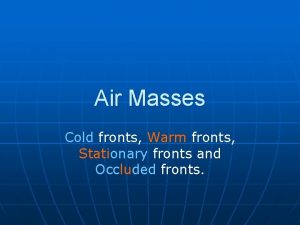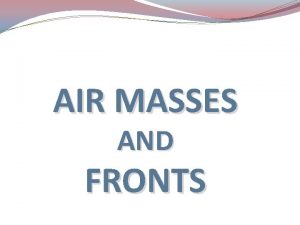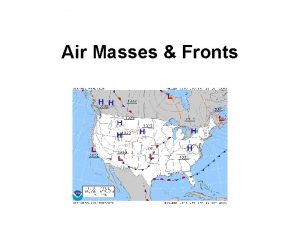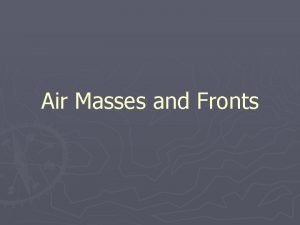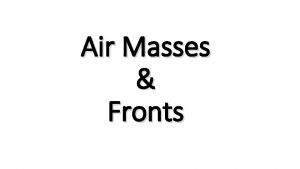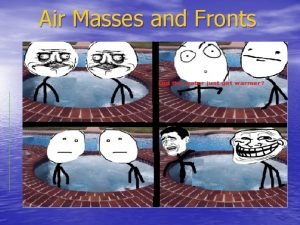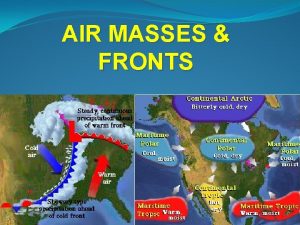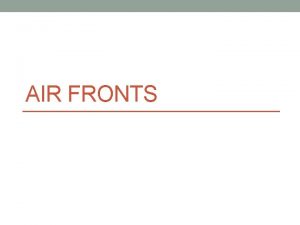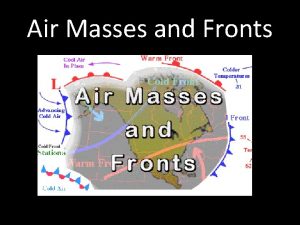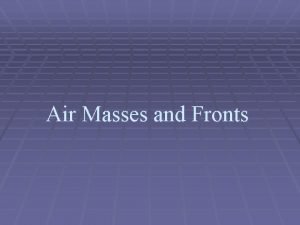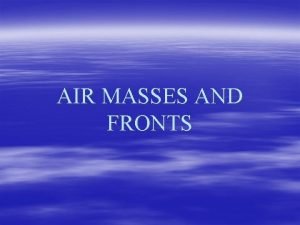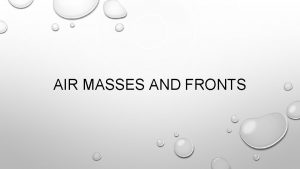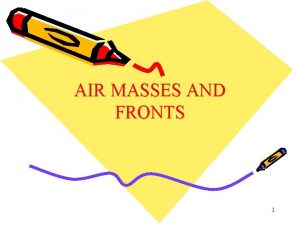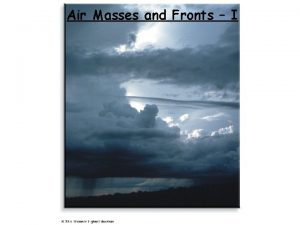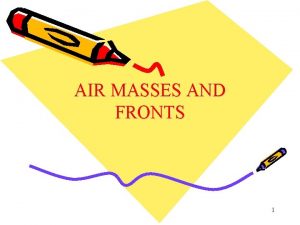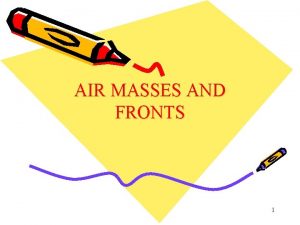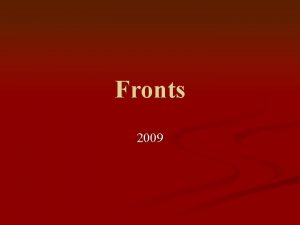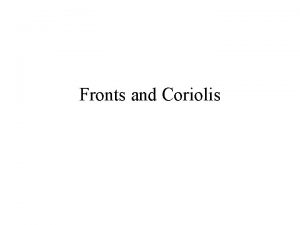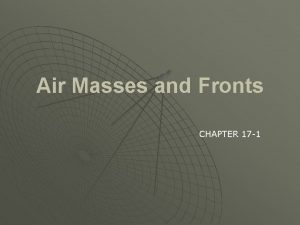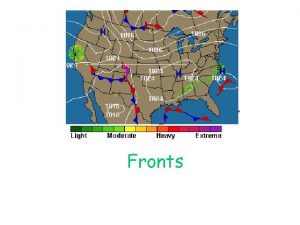Air Masses and Fronts Air Mass n Large


































- Slides: 34

Air Masses and Fronts

Air Mass n Large unit of air in which temperature and moisture conditions are uniform at a given altitude. n Moves separately from surroundings n temperature and moisture conditions determined by SOURCE REGION of air mass

Properties of source region: n Moisture: continental “c”, maritime “m” n determined by underlying surface (ocean or land) n n Thermal: Polar “P”, Tropical “T”, Equatorial “E”, Arctic “A” n determined by latitude n

n Combination: n c. P n m. T n c. A n m. E (or c. AA)

Air Masses that affect U. S. weather: n c. P: n c. A: n m. P, Pacific: cool, moist air cold dry air from Canada; High pressure from Arctic Ocean region; extremely cold m. P, Atlantic: cool, moist, but often no effect due to prevailing wind n m. T: from Gulf and Caribbean: hot, wet air n m. T, Pacific: slightly cooler and drier n c. T: hot dry air; persistent

Air masses… n modify the local weather of places they invade n are modified by the places they invade

n Front: the boundary between two unlike air masses n n unlike in temperature, moisture, or both named according to motion of the cold air

Cold front

Cold front Cold air is advancing n 20 mph n leading edge is steep (1: 40) n unstable along front: warm air rises over cold air rapidly n short duration (hours) n heavy precipitation in narrow band behind front n followed by clear weather n Symbol : n

Cold front animation



Warm Front

Warm front Cold air is retreating n 10 mph n leading edge is not steep (1: 150) n warm air gently climbs over cold air (not as unstable as cold front) n duration (days) n stratus and nimbostratus clouds n light precipitation in wide band ahead of front n Symbol: n

Warm front animation


Stationary front n no movement of air masses n precipitation at the front: not much on warm side n stratus clouds and steady precipitation on cold side n n Weather map symbol :

Occluded front occurs when a cold front overtakes a warm front


n In occluded fronts, warm air wedge is lifted off of ground; clouds are high, then they lower and thicken into middle and low clouds; precipitation occurs n Symbol : n Occluded fronts are associated with storms called “wave cyclones”


Cyclogenesis: the development of a wave cyclone n Wave cyclone: migrating center of low pressure n causes storms in the midlatitudes n Form along polar front n

Favorable conditions: n n n “Trough” of low pressure between two Highs along polar front converging air unstable


1. Early stage surface convergence; lifting around Low


2. Open Stage



3. Occluded Stage



4. Dissolving Stage warm air mass completely cut off from ground; no more uplift

 What are middle-latitude cyclones?
What are middle-latitude cyclones? Air mass
Air mass Air masses in north america
Air masses in north america Two cold air masses converge on a warm air mass
Two cold air masses converge on a warm air mass Cold front air movement
Cold front air movement Air masses & frontswhat is an air mass?
Air masses & frontswhat is an air mass? Maritime tropical air mass symbol
Maritime tropical air mass symbol Air masses & frontswhat is an air mass?
Air masses & frontswhat is an air mass? Air masses & frontswhat is an air mass?
Air masses & frontswhat is an air mass? Stationary front
Stationary front Why are cold fronts steeper than warm fronts
Why are cold fronts steeper than warm fronts An air mass is created when a large body of air
An air mass is created when a large body of air Cold air mass overtakes warm air mass
Cold air mass overtakes warm air mass Air mass vocabulary
Air mass vocabulary Large scale rotating air mass
Large scale rotating air mass Front
Front Air fronts
Air fronts Air masses and their characteristics
Air masses and their characteristics Area of low pressure where air masses meet and rise
Area of low pressure where air masses meet and rise Air masses form in the tropics and have low pressure
Air masses form in the tropics and have low pressure Meteorological symbols for four types of fronts
Meteorological symbols for four types of fronts Jet stream map
Jet stream map How to draw warm and cold fronts
How to draw warm and cold fronts Importance of air masses
Importance of air masses Types of air masses
Types of air masses Lake effect side
Lake effect side Continental polar symbol
Continental polar symbol Air mass map
Air mass map Warm hall
Warm hall Weather depression
Weather depression What are the five types of air masses?
What are the five types of air masses? Continental arctic air mass symbol
Continental arctic air mass symbol Air masses
Air masses Air masses
Air masses Occluded front
Occluded front

